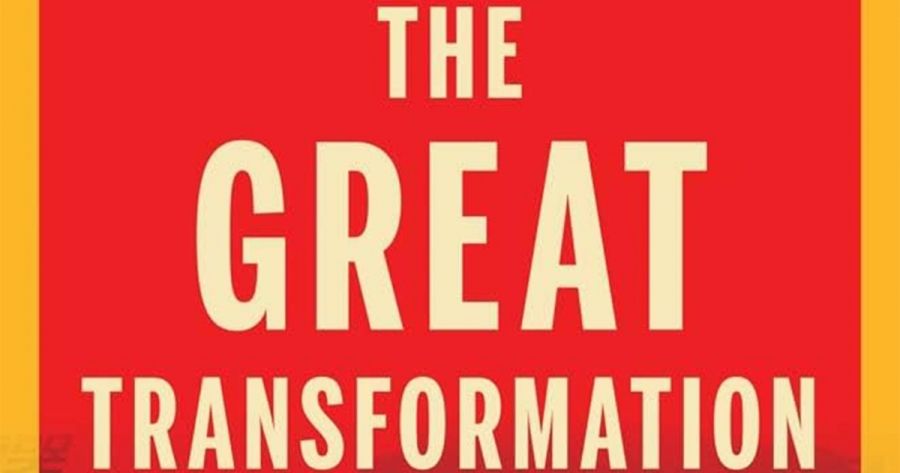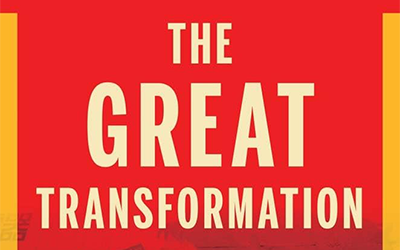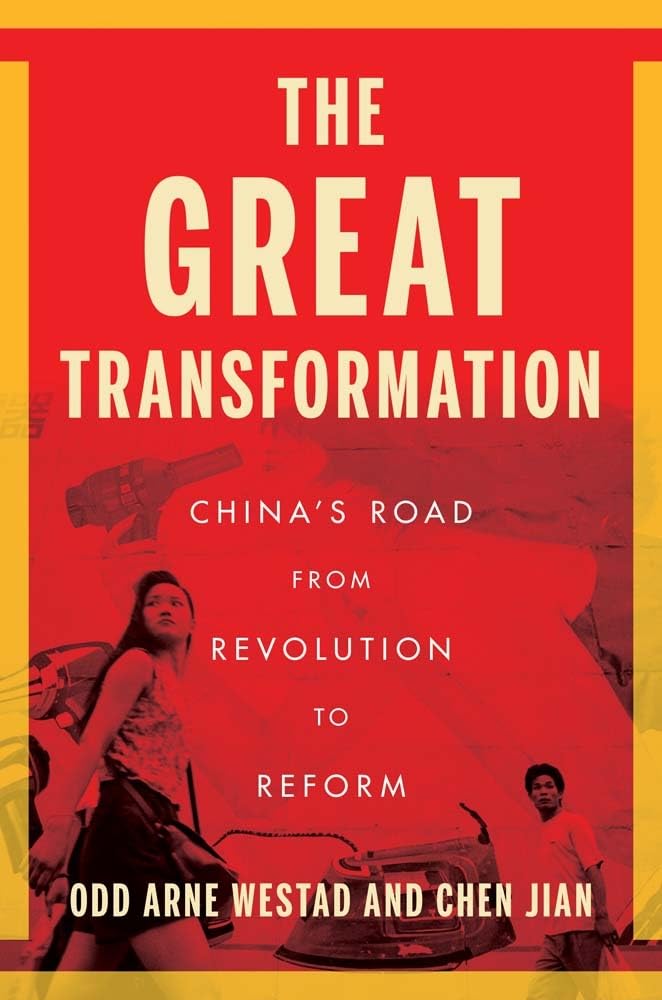
- Free Article: No
- Contents Category: China
- Review Article: Yes
- Article Title: A cacophony of voices
- Article Subtitle: Turbulent times under Chairman Mao
- Online Only: No
- Custom Highlight Text:
This is a work based on deep scholarship, by two leading historians of China. The writing is clear and precise, the narrative richly informed by primary sources. Personal stories of individuals are used to great effect.
- Featured Image (400px * 250px):

- Alt Tag (Featured Image): Geoff Raby reviews ‘The Great Transformation: China’s road from revolution to reform’ by Odd Arne Westad and Chen Jian
- Book 1 Title: The Great Transformation
- Book 1 Subtitle: China’s road from revolution to reform
- Book 1 Biblio: Yale University Press, US$38 hb, 418 pp
- Book 1 Cover Small (400 x 600):

- Book 1 Cover (800 x 1200):

- Book 1 Readings Link: https://www.readings.com.au/product/9780300267082/the-great-transformation--odd-arne-westad-jian-chen--2024--9780300267082#rac:jokjjzr6ly9m
China’s journey towards the catastrophe of the Cultural Revolution is well-trodden ground, but the use of a rich trove of sources yields insights, such as Mao in 1962 flirting with local agricultural markets while campaigning against ‘Revisionists’ in the Party. The spontaneous emergence of local initiatives in times of economic stress is an important recurring theme throughout the book.
The Cultural Revolution caused great economic disruption. In July 1968, Mao finally gave the order to end the chaos and to dissolve the Red Guard groups. By autumn, a ‘re-education’ campaign had begun, and some sixteen million students were eventually sent to the countryside. At the October 1968 Plenum of the Chinese Communist Party, Mao (who had led the People’s Republic of China since 1949) was still attacking Revisionists in the Party. Deng Xiaoping, who came to play such a pivotal role in this story, was purged as a ‘capitalist roader’. Deng had been Mao’s enabler, until he was no longer.
The death in September 1971 of Lin Biao, Mao’s chosen successor, while fleeing to Russia, was a turning point. Mao began to retreat from active political life as he declined physically. This gave Premier Zhou Enlai, also terminally ill, an opportunity to take a firmer grasp on the government and to reorganise the People’s Liberation Army.
Now that politics were beginning to stabilise as Mao became increasingly frail, the new leadership was keen to address the economy. The Cultural Revolution had crashed central control by the Party. Bottom-up experiments spread in farming and non-rural industries near major cities. Changes in domestic economic policy settings occurred together with changes in China’s external relations as one country after another, Australia included, established relations with Beijing. An important step on China’s path to reform was establishing contact with the United States, beginning in 1971 with Henry Kissinger’s visit. Foreign travel restrictions were eased, and Hong Kong began to play a crucial intermediary role. The smuggling of goods and medicines boomed.
Mao’s final years are told as an exciting tale of palace intrigue. He sought to balance the ‘Gang of Four’ radicals led by his fourth wife, Jiang Qing, who remained faithful to the Cultural Revolution, with pragmatists to run the country. All the while, Mao ‘loftily floated between these camps’.
Following Zhou Enlai’s death in April 1976, spontaneous demonstrations mourning him alarmed the Party. Leftists used them to strengthen their position. Mao agreed that Deng had been the ‘black hand’ behind the demonstrations, and Deng was once again purged. Hua Guofeng was made premier and first vice chairman, effectively anointed as Mao’s successor.
The succession struggle following Mao’s death and the coup against the Gang of Four, led by Hua Guofeng and Marshall Ye Jianying, and culminating in the Gang’s arrest, imprisonment, and eventual execution is grippingly told. (Jiang Qing committed suicide in 1991.)
By the late 1970s, China’s economic situation was dire. Agriculture had not progressed in twenty years and the country teetered on the verge of a food crisis. Many provinces were allowing incentives and individual responsibility for farmers to try to improve things.
The legacy of the Cultural Revolution still hung heavily over internal CCP politics. Tensions between Hua Guofeng’s cautious centrist pragmatism and Deng’s sense of urgency, driven by fear of imminent war with the Soviet Union, had not been resolved.
By late 1978, Hua Guofeng’s centre began to fall apart. Supporters of Deng’s pragmatism, championing his slogan ‘seeking truth from facts’ went on the attack against defenders of the Cultural Revolution and sought the rapid rehabilitation of those purged during that time. The changed political atmosphere within and outside the CCP saw widespread protests over many and diverse issues. The authors explain it was a ‘cacophony of voices in what amounted to a festival of freedom’, unprecedented in the communist era.
When Deng started coming under attack, he led a crackdown to protect the Party’s dictatorship. Ten years later he was to do the same over the Tiananmen protests in June 1989. Still, Chinese society, media, and openness to foreign ideas had changed fundamentally in these early years of reform. It was clear that China was embarked on a period of massive change, though its direction was not immediately evident. Hua was replaced as premier by Deng’s man Zhao Ziyang and in 1981 as Chairman of the CCP by Hu Yaobang. This study treats Hua sympathetically.
Deng shaped the new era in China, embracing what seemed irreconcilable: economic liberalism and political authoritarianism. He for one saw no contradiction. In October 1984, the Third Party Plenum adopted the Resolution on the Reform of the Economic System. This was a pivotal document, breaking decisively with central planning in favour of the market. But while China’s course for the next decade was set, political winds would still blow hard at times.
The authors, while applauding China’s remarkable economic success story, lament the failure to reform and liberalise the political system. The story’s hero, Deng Xiaoping, is also its villain. China’s Great Transformation was also attributable to the millions of individuals prepared to test the limits of what the Party would permit to achieve a better life for themselves and their families. This was a revolution from below.
The Party struck a grand bargain with the people: freedom to pursue material improvement, but not to challenge the Party’s control. The book concludes with a reflection on the age of Xi Jinping (general secretary since 2012); the authors note a return to megalomania in politics and tighter control. Stressing the contradictions of China and its complexity, the authors sensibly leave it to the reader to reflect on what the future may entail. After reading this excellent, entertaining, and enthralling account of China’s modern journey, it seems all the more inconceivable that China made it through at all.


Comments powered by CComment